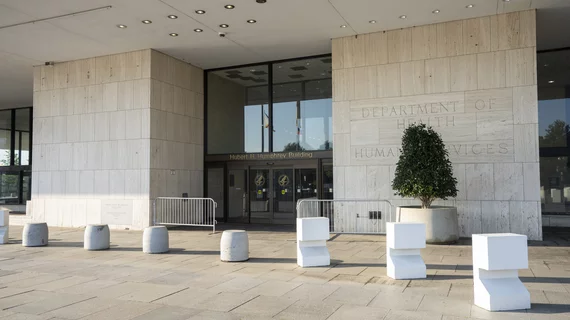HHS offers update on comms pause as rapid policy shifts continue
A pause on external communications from the U.S. Department of Health and Human Services (HHS)—including the Food and Drug Administration (FDA) and Centers for Disease Control and Prevention (CDC)—is relaxing as HHS increases staffing, a spokesperson said.
The moratorium was first reported by the Washington Post on Jan. 21—the day after President Donald Trump was sworn into office—and was said to include health advisories, scientific reports, website updates and social media posts.
For example, a suspected update from the CDC on the H5N1 avian influenza outbreak ended up being delayed for a few days. It’s since been released, with the agency’s bird flu tracker receiving its latest update on Wednesday.
Other communications from federal health agencies, however, were distributed without delay, including recall notices and similar alerts from the FDA.
Regardless, confusion over the abruptness and scope of the pause confused HHS staff who spoke with the Washington Post—and it still isn’t entirely clear what communications remain delayed. However, in a statement sent to HealthExec, a spokesperson confirmed communications pertinent to the public are going out.
“HHS continues to increase staff levels as we look forward to the new Secretary leading the agency. HHS has approved numerous communications related to critical health and safety needs and will continue to do so. In addition, the Assistant Secretary for Public Affairs (ASPA) is now more flexible with communications as HHS and its divisions work to align with President Trump’s agenda,” the spokesperson said.
“There are several types of external communications that are no longer subject to the pause. All HHS divisions have been given clear guidance on how to seek approval for any other type of mass communication,” they added.
Similar statements have been sent to other media outlets that reached out for clarity. For now, it appears HHS can’t be more specific. A source who spoke with the Washington Post added the order may largely owe to confusion during a transition to a new administration.
A new permanent HHS Secretary has yet to take office, as Robert Kennedy Jr., Trump’s nominee, is still awaiting confirmation by the U.S. Senate.
Rapid policy shifts
It’s been a chaotic two weeks for healthcare. President Donald Trump has already signed a myriad of executive orders, one of which instructs the U.S. to withdraw from the World Health Organization (WHO). Another, a freeze on funding federal agencies, ended up crashing Medicaid systems nationwide. Trump has since backtracked on that order.
On Wednesday, the Wall Street Journal reported billionaire Elon Musk’s pseudo-government agency Department of Government Efficiency (DOGE) is investigating the Centers for Medicare & Medicaid Services, looking for “big money fraud.”
Meanwhile, CMS has been ordered to ban gender-based language, including references to transgender people, from all upcoming manuscripts.
HealthExec reached out to CMS for comment on all of the above but has yet to receive a reply.

